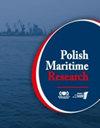基于逆向工程的船舶螺旋桨参数化三维几何模型
IF 2
3区 工程技术
Q2 ENGINEERING, MARINE
引用次数: 1
摘要
摘要采用逆向工程的方法,建立了螺旋桨有效的参数化三维几何模型。目标是在自动化螺旋桨建模的同时减少自由参数。建立参数化模型的过程首先通过定义与螺旋桨叶型形状相关的特征矩阵来生成初始点云。然后,通过变形特征矩阵和重采样对初始点云进行变形和细化。最后,通过表面重构生成螺旋桨的三维几何模型。通过交互修改特征矩阵,可以自动建立模型。两个数值分析验证了参数化三维几何模型的性能。具体来说,利用该模型构造了两个螺旋桨,估计了重建后的螺旋桨与原螺旋桨的形状误差。选取这些螺旋桨作为研究对象,确定采用该模型构建的螺旋桨与基准螺旋桨的水动力性能误差。数值研究结果表明,参数化三维几何模型可以在有效的误差范围内精确地重建上述几何形状。水动力误差分析表明,重建模型的几何误差对螺旋桨性能的影响较小。这表明本研究中描述的模型具有泛化和鲁棒性。此外,还利用参数化三维几何模型批量生成了一些不常见的螺旋桨CAD模型。本文章由计算机程序翻译,如有差异,请以英文原文为准。
Reverse Engineering-Inspired Parametric 3D Geometry Model of Marine Propeller
Abstract In this study, an effective parametric 3D geometry model of a propeller was established with the aid of reverse engineering. The goal is to reduce the free parameters while automating the modelling of the propeller. The process of building the parametric model begins by generating an initial point cloud by defining the feature matrix associated with the propeller blade profile shape. Subsequently, the initial point cloud is deformed and refined by the deformation feature matrix and resampling. Finally, a 3D geometry model of the propeller is generated by surface reconstruction. The model can be built automatically by interactively modifying the feature matrices. Two numerical analyses illustrate the performance of the parametric 3D geometry model. Specifically, two propellers are constructed using the proposed model to estimate the shape error between the reconstructed propellers and the original offset of the propellers. These propellers are selected as research objects to determine the hydrodynamic performance error between the propeller constructed by the proposed model and a benchmark propeller. According to the results of the numerical study, the parametric 3D geometry model can precisely reconstruct the aforementioned geometry within a valid error range. The hydrodynamic error analysis demonstrates that the geometric inaccuracy from the reconstructed model has less impact on the propeller performance. This indicates that the model described in this study is generalised and robust. Moreover, some uncommon propeller CAD models were generated in batches using the parametric 3D geometry model.
求助全文
通过发布文献求助,成功后即可免费获取论文全文。
去求助
来源期刊

Polish Maritime Research
工程技术-工程:海洋
CiteScore
3.70
自引率
45.00%
发文量
20
审稿时长
>12 weeks
期刊介绍:
The scope of the journal covers selected issues related to all phases of product lifecycle and corresponding technologies for offshore floating and fixed structures and their components.
All researchers are invited to submit their original papers for peer review and publications related to methods of the design; production and manufacturing; maintenance and operational processes of such technical items as:
all types of vessels and their equipment,
fixed and floating offshore units and their components,
autonomous underwater vehicle (AUV) and remotely operated vehicle (ROV).
We welcome submissions from these fields in the following technical topics:
ship hydrodynamics: buoyancy and stability; ship resistance and propulsion, etc.,
structural integrity of ship and offshore unit structures: materials; welding; fatigue and fracture, etc.,
marine equipment: ship and offshore unit power plants: overboarding equipment; etc.
 求助内容:
求助内容: 应助结果提醒方式:
应助结果提醒方式:


